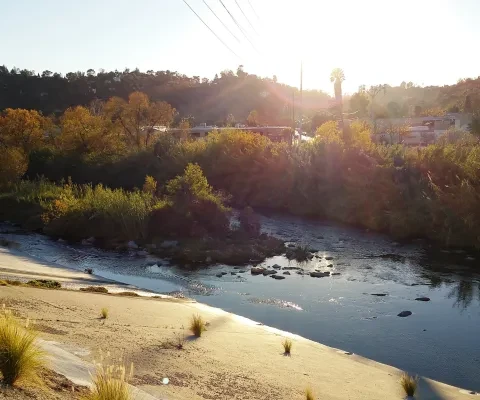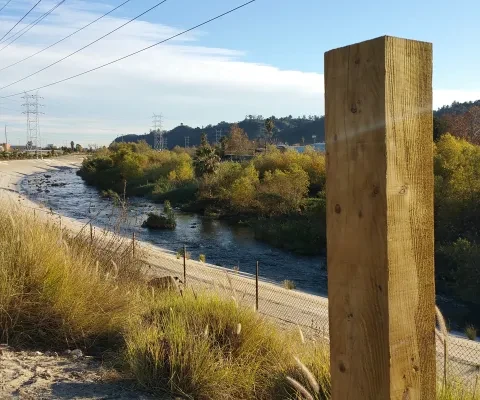The Bowtie Parcel. Photo by Michelle White
GUEST BLOG BY PARK CHAMPIONS CORE LEADER MICHELLE WHITE
In central Los Angeles, adjacent to Rio de Los Angeles State Park, lies a bowtie-shaped piece of land that feels simultaneously scruffy and tranquil. Known as the Bowtie Parcel, these 18 acres of post-industrial land reside within the former Taylor Yard, a Southern Pacific Railroad service facility. The Bowtie, acquired by California State Parks in 2003, reveals the potential of imagination and transformation, akin to New York’s High Line, a rail line transformed into a landscaped urban paseo with Hudson River and skyscraper views. Within such dense metropolises, the ability to consciously redevelop once-blighted space and bring more nature to city dwellers reflects the substantial impact of space upon social relations. As Luis Rincon, Community Engagement Coordinator for California State Parks, says, “The health and vitality of a community depend on its green space, its open space.” Setting foot into the Bowtie immediately evokes the immense variety and messy juxtaposition of nature and urbanity that represents Los Angeles as a whole, and the history of its river. White noise from not-too-distant freeways meets the rush of the river. Carefully-designed “earthworks” and interpretive signage meet furtively-scrawled graffiti. Bikers whizz by on land, while ducks cruise by on the water. Non-native fountain grass and Mexican fan palms meet and overtake decomposed asphalt, displaying nature’s uncanny ability to reclaim over time. Fragrant native plants white sage and yerba santa meet the vaguely chlorinated smell of the river. Concrete banks meet soft-bottom riverbed.
The Bowtie Parcel. Photo by Michelle White
With the July 2015 passage of a $1.3-billion plan to revitalize the LA River, now pending approval from the Army Corps of Engineers and Congress, the Bowtie is already unique in its placement along the soft-bottom Glendale Narrows section of the river. In these 11 miles roughly between the 134 and 110 freeways, cement never set over the high water table, so while channelization severely disrupted the riparian habitat, wildlife returned to this area over time. Concrete still slopes down to the water, but Arundo donax (giant cane), an invasive grass from Southeast Asia, grows along the water in lush abundance, softening the scene – and preventing erosion. Herons, cormorants, egrets, carp and green sunfish call the river home. It’s an unexpected oasis. Due to placement of the railroad adjacent to the LA River in the 1870s and channelization of the river in the 1930s, LA has remained fundamentally disconnected from its river as a recreational amenity for more than a century. However, groups such as Friends of the LA River, Play LA River, the Army Corps of Engineers, and the arts organization Clockshop have all worked to revitalize sections of the river. In particular, Clockshop installed land art and interpretive signage at the Bowtie, working with LA-based artists and Woodbury Architecture for Civic Engagement (ACE) students, and facilitated events such as moonlit poetry readings, rain barrel workshops and urban campouts. This past weekend Clockshop in partnership with California State Parks and the National Park Service, hosted an LA River Campout at the Bowtie. The popular reoccurring event offers Angelenos the opportunity to spend the night at the Bowtie, complete with dinner, campfire programming, and a survey of local flora and fauna. The Bowtie provides a central city setting to learn about LA’s abundant nature coexisting with the concrete, and to connect with community. As Rincon sums up, “The space is there, but when you add the people and the energy, it makes it come alive.” Find more about the Bowtie, Clockshop and the LA River Campout here.

